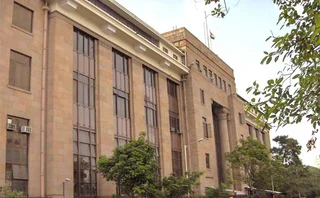
Swap stabilisers

The economic picture has become markedly gloomier for many of Asia's economies in the past three months, with a slowdown in the city states of Hong Kong and Singapore, as well as major Asian economies such as China, Japan and South Korea. This was clearly illustrated by Japanese exports tumbling nearly 46% in January having already dropped 35% in December.
The latest data indicates how tough life is getting for many corporates, which is in turn putting pressure on financial services sector in Asia.
South Korean banks, for example, have faced acute onshore dollar funding problems for some time. This was highlighted again when Woori Bank said last month it would not exercise calls on its $400 million, Singapore-listed, 10-year subordinate notes due to adverse markets. This was an unusual step, and evidence that replacement costs are higher than under the terms of the outstanding debt.
But policy makers are moving fast to establish processes to promote greater financial stability. And they are in a relatively strong position - compared with their counterparts in eastern Europe, at least - given the high levels of savings and foreign-currency reserves in Asia.
A major initiative aimed at bolstering stability is the increase in size and scope of region-wide currency swap arrangements. These shared pools of short-term currency-drawdown arrangements can help countries deal with short-term imbalances, such as shortages of certain currencies on shore.
The Association of Southeast Asian Nations - along with China, Japan and South Korea - plans to increase this pool of bilateral currency swaps from the current $80 billion to $120 billion by May. Moreover, these countries intend to increase from 10% to 20% of the total pool the proportion of funds individual nations can draw on without the need for International Monetary Fund 'conditionalities'.
Countries are also putting in place more bilateral deals. Hong Kong and China are finalising details of a 200 billion renminbi ($29.2 billion) currency swap facility. Meanwhile, Singapore and South Korea have put in place a $30 billion facility with the US Federal Reserve, India has set up swap facilities with several central banks and Indonesia is pressing to increase the scale of its bilateral swap deals.
These efforts should mean countries are better placed to head off potential problems. South Korea has already used $10.4 billion of its $30 billion Fed facility in an attempt to bolster the supply of dollars onshore, following a government pledge to guarantee up to $100 billion of local banks' refinancing out to three years.
It is clear that Asian nations can and should move to ensure regional stability.
Christopher Jeffery.
Only users who have a paid subscription or are part of a corporate subscription are able to print or copy content.
To access these options, along with all other subscription benefits, please contact info@risk.net or view our subscription options here: http://subscriptions.risk.net/subscribe
You are currently unable to print this content. Please contact info@risk.net to find out more.
You are currently unable to copy this content. Please contact info@risk.net to find out more.
Copyright Infopro Digital Limited. All rights reserved.
As outlined in our terms and conditions, https://www.infopro-digital.com/terms-and-conditions/subscriptions/ (point 2.4), printing is limited to a single copy.
If you would like to purchase additional rights please email info@risk.net
Copyright Infopro Digital Limited. All rights reserved.
You may share this content using our article tools. As outlined in our terms and conditions, https://www.infopro-digital.com/terms-and-conditions/subscriptions/ (clause 2.4), an Authorised User may only make one copy of the materials for their own personal use. You must also comply with the restrictions in clause 2.5.
If you would like to purchase additional rights please email info@risk.net
More on Financial stability
A regulatory storm hits China
Regulators are imposing a new wave of tighter financial supervision
Haldane dismisses talk of monetary and macro-prudential tensions
Bank of England’s Andrew Haldane says it is a virtue that different tools can be used to meet conflicting objectives
Central banks laying the seeds for crisis, says UK MP Baker
Chair of UK parliamentary group for economics says a sharp correction in developed world sovereign bond prices could spark a collapse in confidence
Q&A: Mark Branson on the too-big-to-fail problem, modelling and Basel III
Switzerland went first – and furthest – on post-crisis banking reforms, making its industry a test case for the impact of the new regime. But it has not yet solved the too-big-to-fail problem, Mark Branson, chief bank supervisor at Eidgenössische…
Risk Annual Summit: Depositors will trust EU guarantee despite Cyprus, says BdF official
Policy-makers have incentive to accelerate deposit guarantee plans, says Sylvie Matherat of the Banque de France
Risk Annual Summit: Banking union set for mid-2014, says ECB
National supervisors made “gigantic mistakes”, says ECB's financial stability head
RBI sees developing repo markets necessary in meeting Basel liquidity rules
India central bank views repo as an increasingly important market in the wake of Basel III implementation
ESRB narrows its macro-prudential tools
The European Systemic Risk Board is about to announce a slimmed-down list of potential macro-prudential tools, but who has the power to use them is still the subject of debate. By Michael Watt








